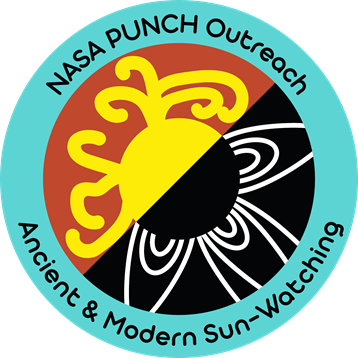Facilitator Resources
All downloadable PDF, Word, and PPT files are screen reader accessible and include ALT TEXT of images. If a file size is not given in the download link, then it is less than one Megabyte (1 MB).
Facilitator Guide
Our Facilitator Guide supports those who will facilitate the Petroglyph Inquiry with blind, low-vision, and sighted learners. The Guide includes an Overview of the Petroglyph Inquiry for Facilitators, Materials (needed and optional), Set-Up, Learning Outcomes, Standards Alignment, and How to Request the Tactile Graphics.
- Download: Word Doc, 15 Mb | PDF, 1 MB
References and Resources
This section includes:
- Educational resources facilitators can use to enrich learner experience of the Petroglyph Inquiry, and
- Academic citations that help to validate the content included in the guided descriptions of the seven images used in the Petroglyph Inquiry.
Requesting the Set of Seven Tactile Graphics
To request the PUNCH Outreach tactile graphics, please send an email to punchoutreach@gmail.com with the following information:
- Name
- Email address & phone
- Shipping address
- Number of sets requested (limited to 2 unless further justified in your description of context)
- The date the tactile graphics are needed by (if not in stock, please allow 4 weeks for new inventory to be created)
- Description of the context for which you intend to use the tactile graphics
- Agreement to provide feedback on your experience using the tactile graphics
Supporting Visuals for Display or Presentation: One Slide for Each Tactile Graphic
Learning Outcomes for the Petroglyph Inquiry
The Petroglyph Inquiry offers learners an authentic and fun journey of learning about ancient and modern Sun-watching. Earnest engagement also exercises important science practices, cross-cutting concepts, and disciplinary core ideas in Earth and Space Science (see the Facilitator Guide - Appendix E).
- Collect information and observations in support of evaluating the strengths and weaknesses of a hypothesis.
- Understand the difference between describing and interpreting something like rock art or a shape or structure that appears in the solar corona.
- Appreciate what the solar corona is and understand that it can only be observed when the Sun’s bright central disk is blocked.
- Recognize the variety of ways that human beings have recorded their observations of the solar corona throughout history, from an ancient petroglyph to a contemporary coronagraph.
- Become familiar with the basic types of shapes and features that appear within the solar corona, including rays, streamers, loops, and solar storms called Coronal Mass Ejections.
- Become aware of the 11-year solar magnetic activity cycle and how the shape and structure of the corona changes, depending on whether the Sun is near a maximum or minimum of sunspot activity.
Content for Each Tactile Graphic
Each Tactile Graphic section includes these four elements:
- Side-by-side images of the Tactile Graphic and the Visual that inspired it.
- A Guided Inquiry about Key Features.
- Opportunities for Reflection and Discussion.
- Additional Commentary.
The Opportunities for Reflection and Discussion are threaded throughout the narrative and support achievement of the learning outcomes. They are pauses that invite learners' to engage with the Inquiry by reflecting and contributing their own thoughts and ideas.
The Additional Commentary sections go beyond the basic description of the image and reveal insights about the way researchers think and reason when evaluating a hypothesis. This section also invites learners to do their own reflecting, thinking, and reasoning.
Ideas for Using the Petroglyph Inquiry
Facilitators can choose to use the Petroglyph Inquiry in a variety of ways depending on time and interest. Some suggestions are:
- Independent Study: Learners track through the inquiry individually and report results.
- Homework with Classroom Discussion: Learners track through the inquiry individually followed by small group and/or classroom discussion to compare and evolve thoughts and ideas.
- Project Based Learning: A community of learners has an extended period of time to investigate and respond to the real-world challenge of the Petroglyh Inquiry.
The “Petroglyph Inquiry” is authentic. There is no “right or wrong” answer. Learners use their study of the Essential Background section and Tactile Graphic descriptions to develop an informed case that supports or refutes the “eclipse” hypothesis for the petroglyph.
Consider sharing your learners' results with punchoutreach@gmail.com using the Subject line: "Petroglyph Inquiry - REPORT." Please see the Facilitator Guide (downloadable above) for more details.
